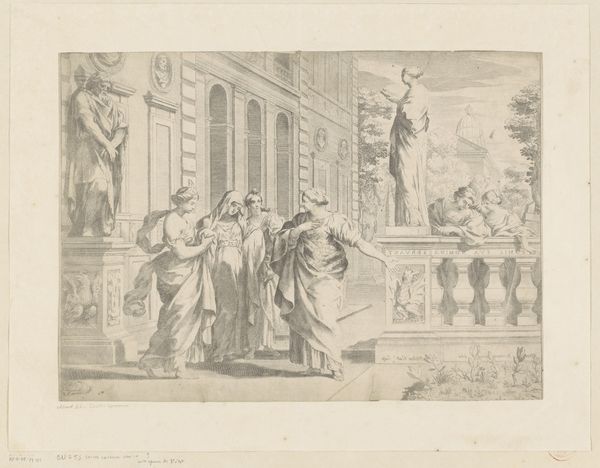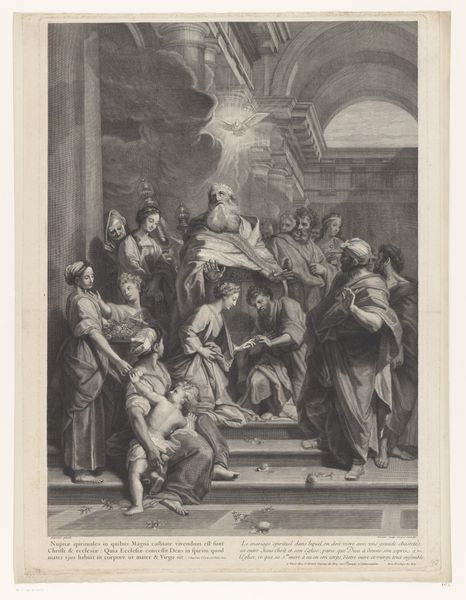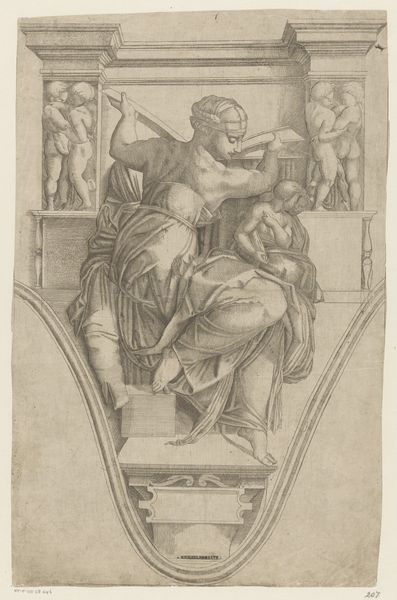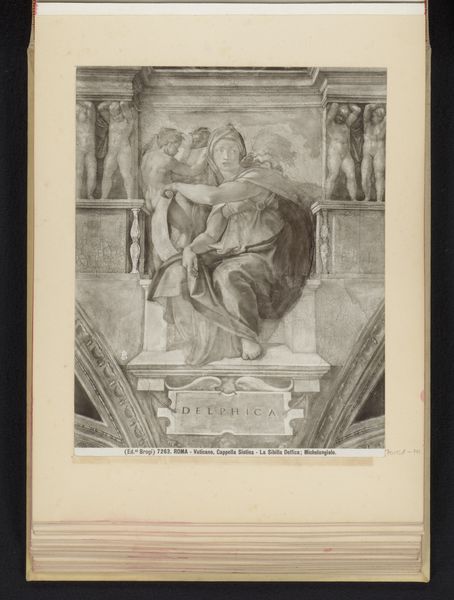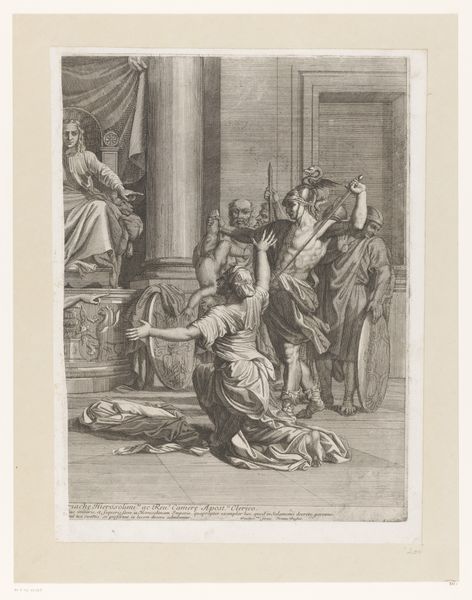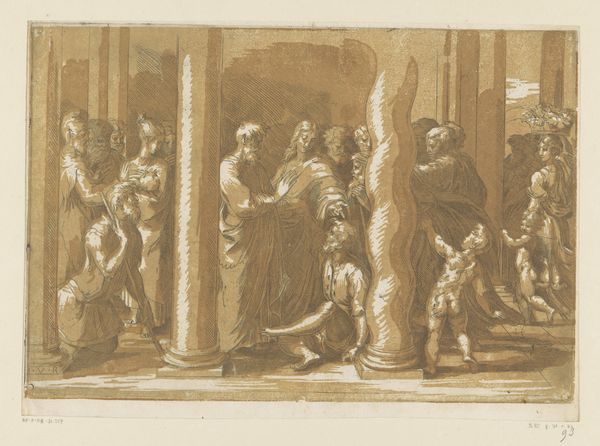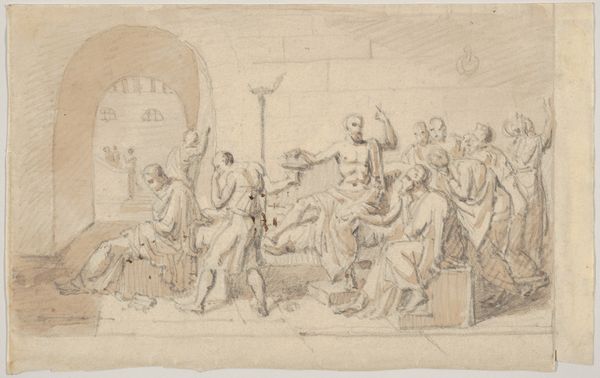
Reliëf met het oordeel van Zaleucus in de Vierschaar van het Stadhuis op de Dam 1655 - 1665
0:00
0:00
hubertquellinus
Rijksmuseum
print, etching, sculpture, engraving
#
narrative-art
#
baroque
# print
#
etching
#
classical-realism
#
figuration
#
sculpture
#
line
#
history-painting
#
engraving
Dimensions: height 435 mm, width 323 mm
Copyright: Rijks Museum: Open Domain
Curator: Here we have "Relief with the Judgment of Zaleucus in the Courtroom of the Town Hall on the Dam" by Hubert Quellinus, created between 1655 and 1665. This artwork resides in the Rijksmuseum. The technique involves both etching and engraving to make a print. What do you first notice? Editor: Oof, tension! You can almost hear the gasp of the crowd. The scene feels... fraught. Like a moment ripped from the very core of a difficult decision. And all those bodies so tightly packed, creates this real sense of intensity, and pain, actually. Curator: Indeed. Quellinus here presents a dramatic narrative, pulling from classical history. It depicts Zaleucus, a lawgiver, faced with blinding his own son as punishment for adultery. He, as well, abides by this same law and pays the price, hence putting out one of his eyes and one of his son's instead. Considering the materials involved – etching and engraving – how might these techniques shape the message? Editor: The very lines feel deliberate, austere. Look at the stark contrast of light and shadow; it adds weight to the gravity. You can see this man must follow a specific material law because it also affects him. The print medium makes it feel more… bureaucratic. Not as emotive as if it was made by paint or clay. Almost matter-of-fact even though it showcases such raw emotion. Curator: Exactly. The printmaking process lends itself to wider dissemination. The act of repeated lines speaks to labor, the many states of the production. It shifts away from one-of-a-kind object towards wider circulation of a historical event or story and how its image becomes part of a collective imagining of what governance and material law mean. Editor: Absolutely, and this brings me back to those faces... some pleading, others stoic, a few genuinely horrified. Each a character in this drama, affected and bound by laws; none completely divorced from their emotions and choices. But overall there is a certain coldness to the tone that makes me believe that justice in all ways is very mechanical here. I cannot see mercy or lenience from anyone's faces here. Curator: So, considering Quellinus’s work as an etcher-engraver, he delivers a story of hard decisions, using a mass-producible art to reflect complex ideas. Editor: Yes, absolutely, an age-old story captured in line, shadow, and – dare I say it – a kind of unsettling calm.
Comments
No comments
Be the first to comment and join the conversation on the ultimate creative platform.

